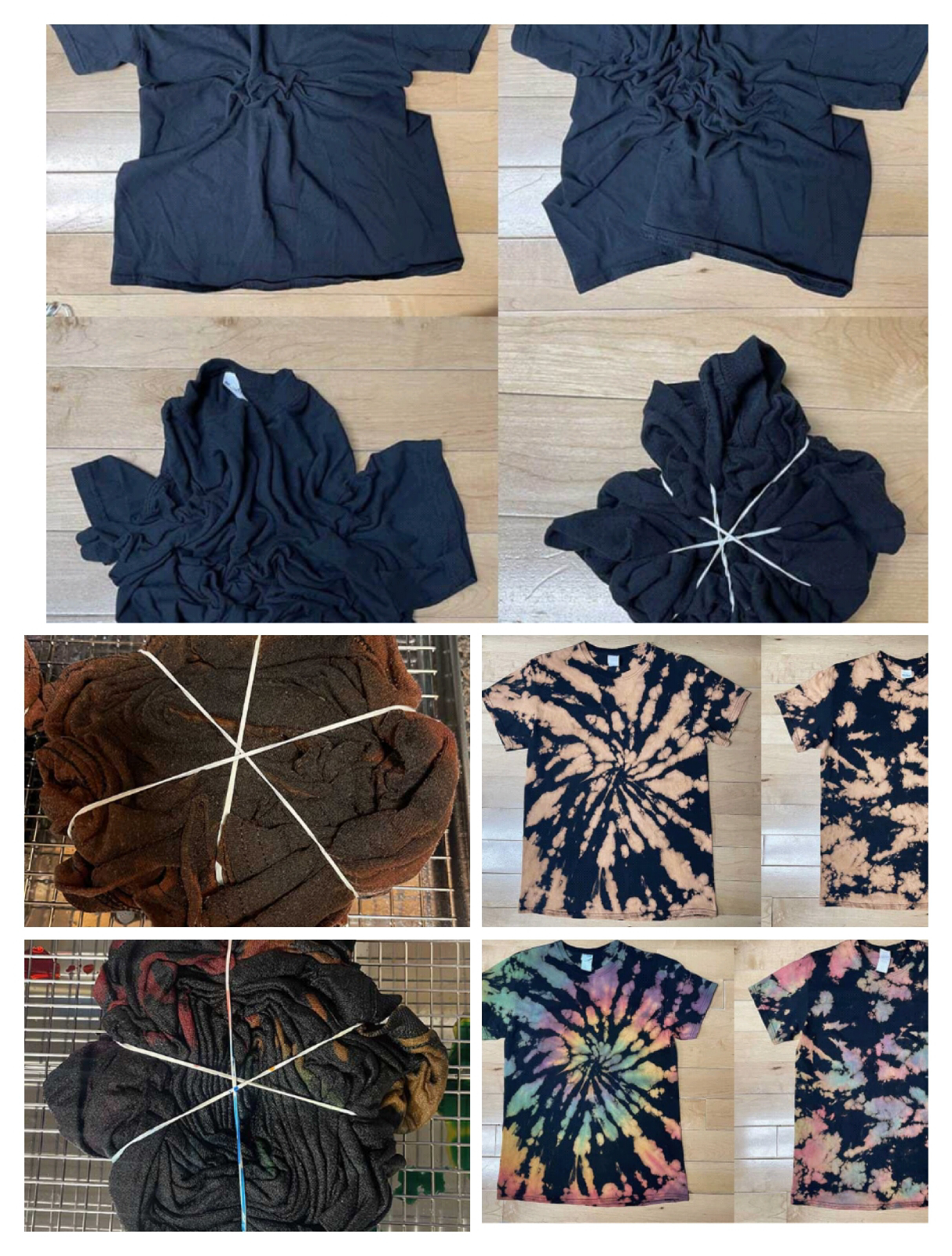Types of tie n dye techniques
Types of Tie Dye
Shibori: Shibori is a traditional Japanese tie-dye technique that involves folding, twisting, and binding fabric to create intricate patterns. Shibori techniques include Arashi (pole-wrapping), Itajime (shape-resist), Nui (stitching), and Kumo (twist-and-bind).
oCrumple: Crumple tie-dye is a simple technique that involves randomly crumpling up fabric and tying it with rubber bands or string. The resulting pattern is a mottled, organic design.
Spiral: Spiral tie-dye is created by twisting a section of fabric into a tight spiral and tying it off with rubber bands. The resulting pattern is a circular design that radiates out from the center.
Ombre: Ombre tie-dye involves creating a gradient effect by dipping fabric into dye at different depths. This technique can be used to create a subtle or bold color transition.
Stripe: Stripe tie-dye involves folding and binding fabric in a specific pattern to create stripes. This technique can be used to create a variety of stripe designs, from thin, even stripes to wide, irregular stripes.
Batik: Batik is a technique that involves applying wax to fabric to resist dye in certain areas. The fabric is then dyed, and the wax is removed to reveal the design. This technique can be used to create intricate patterns and designs.
Reverse tie-dye: Reverse tie-dye involves removing color from fabric instead of adding it. This technique is achieved by tying fabric with rubber bands and applying bleach or other color-removing agents to create a negative design.











Comments
Post a Comment